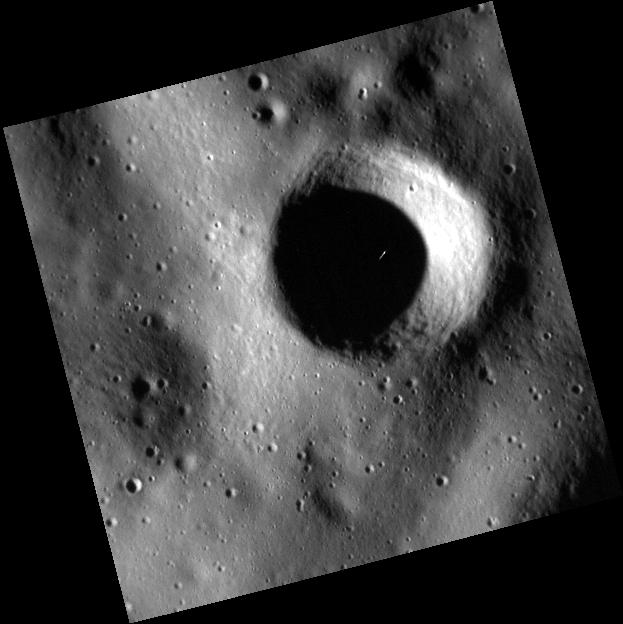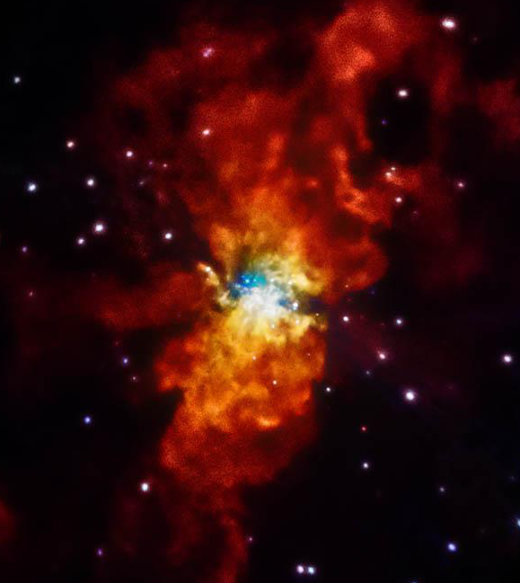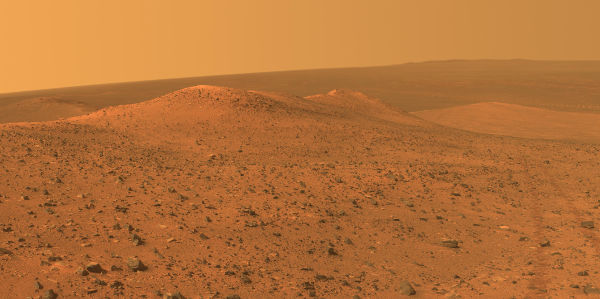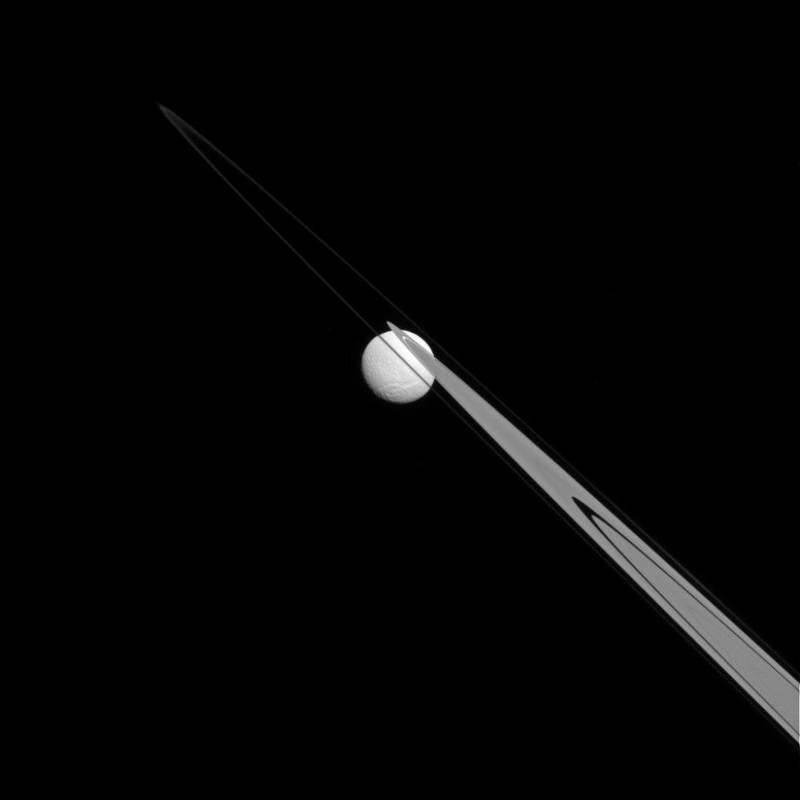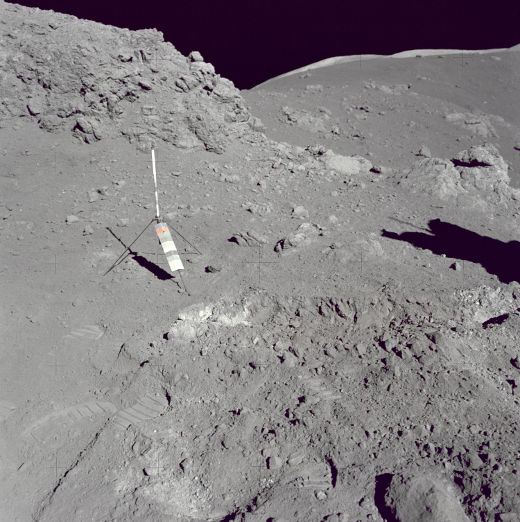
This tripod like piece of equipment is actually the gnomon, one of the Apollo lunar geology hand tools, and photometric chart assembly used as a photographic reference to establish local vertical Sun angle, scale and lunar color. This picture is from the area at Station 4 (Shorty Crater) where the now famous orange soil was found by Apollo 17 crewmen Moon. This was during the second Apollo 17 extravehicular activity (EVA-2) at the Taurus-Littrow landing site. What look like astronaut footsteps are visible in the lower left portion of this picture from the moon.
